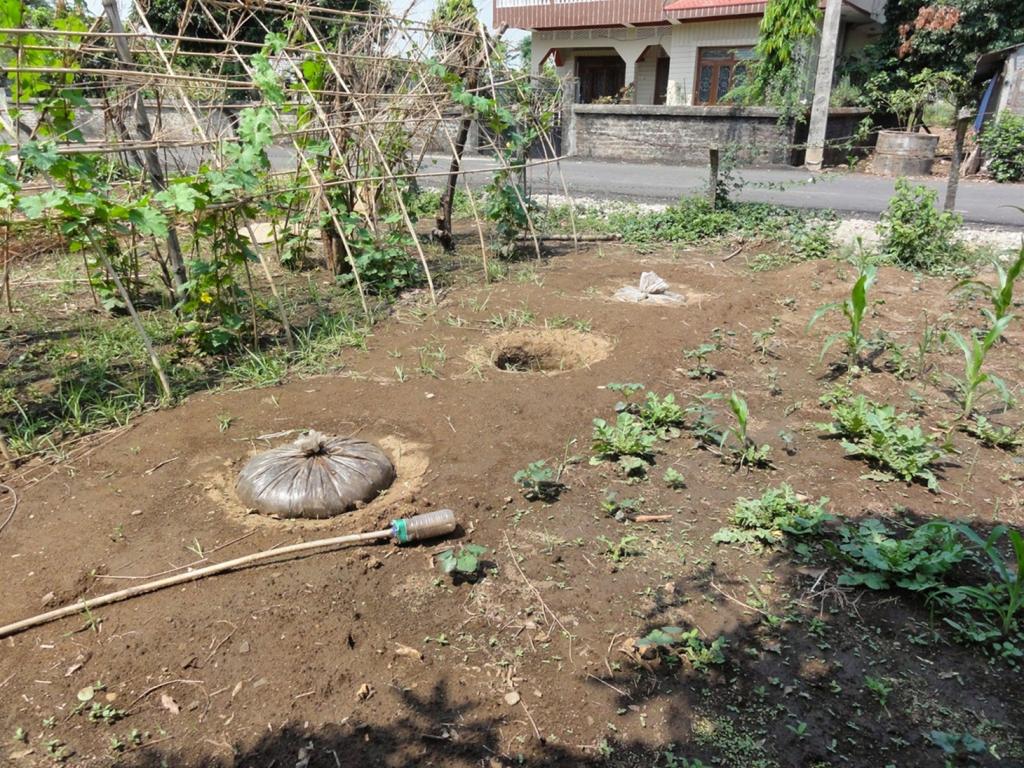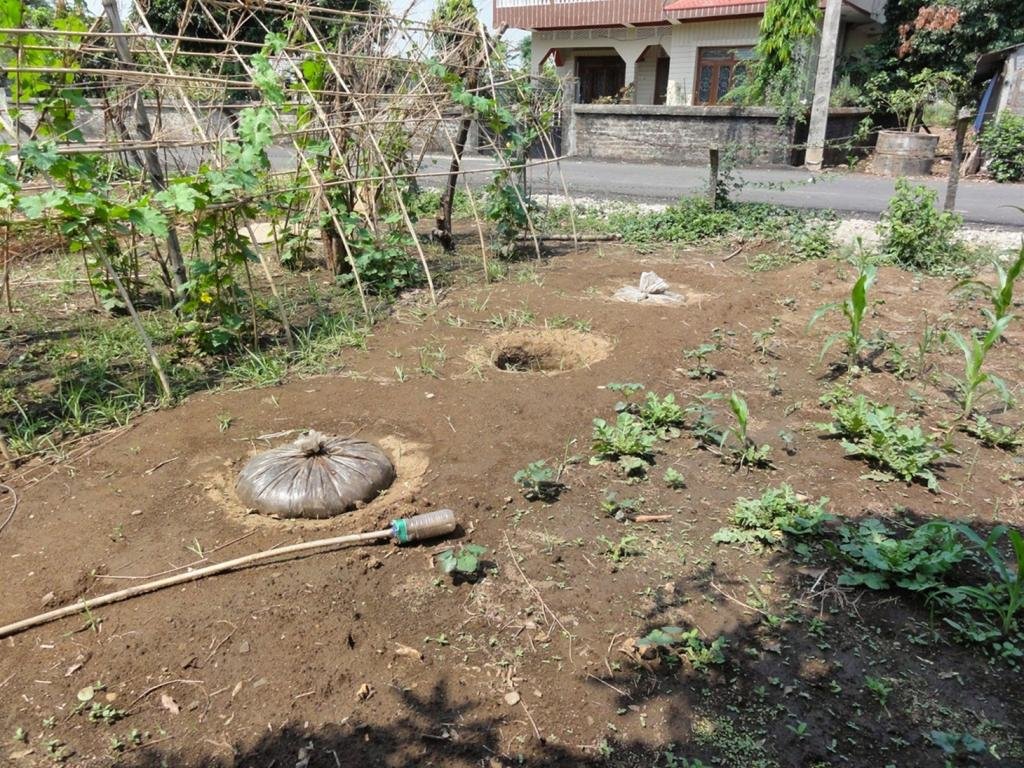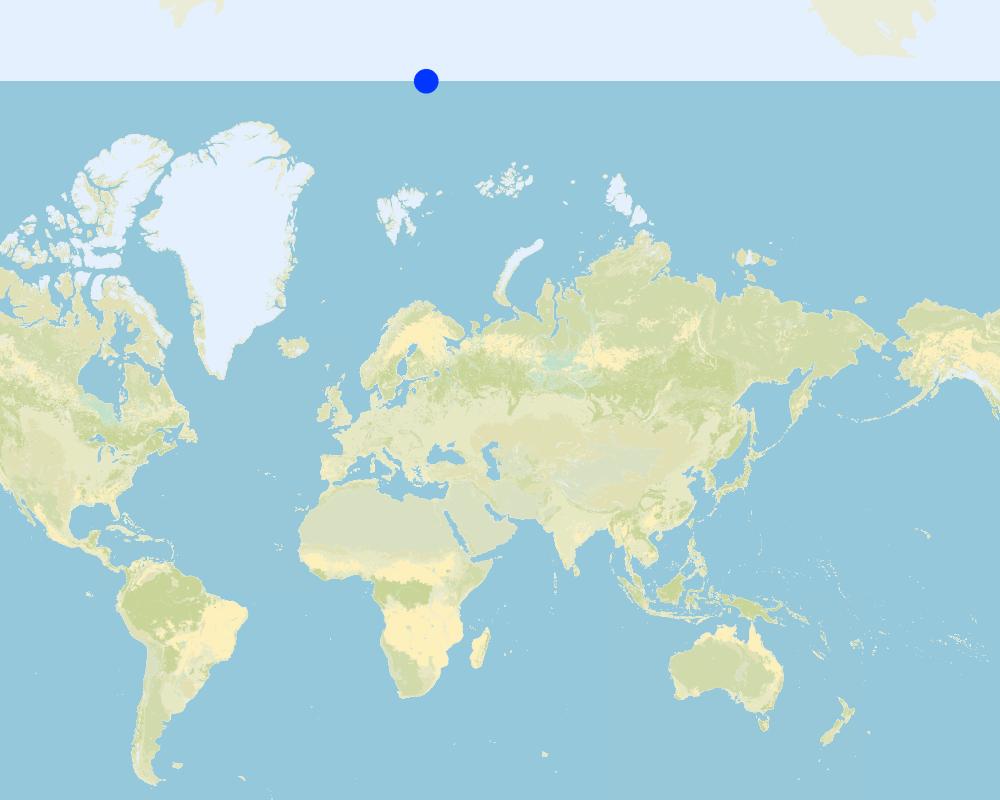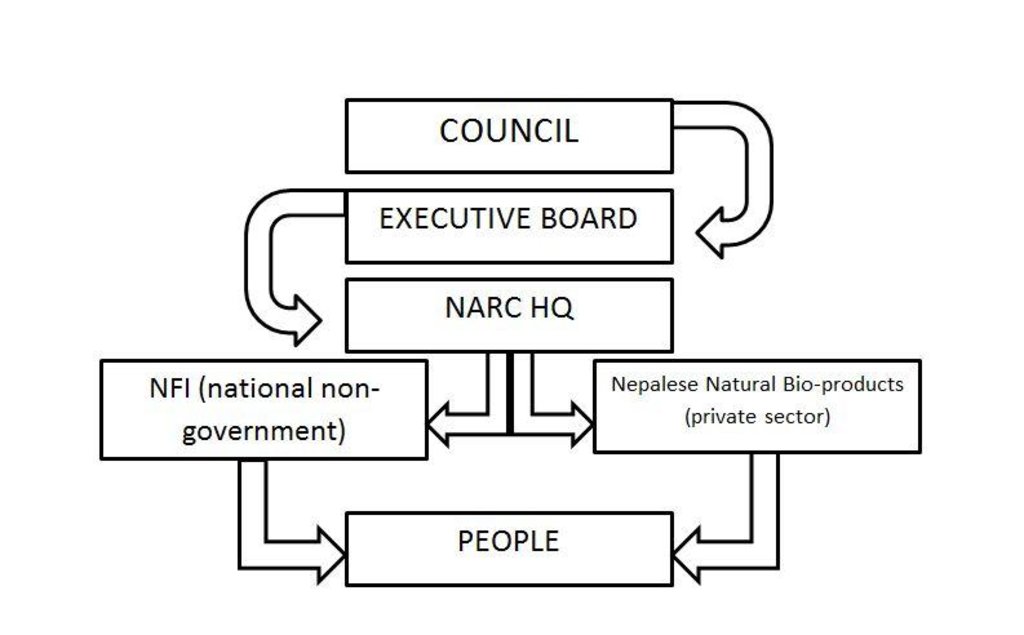Benefits of Jeevatu in crop production and protection [Népal]
- Création :
- Mise à jour :
- Compilateur : Sabita Aryal
- Rédacteur : –
- Examinateur : Fabian Ottiger
Jevatu
approaches_2484 - Népal
Voir les sections
Développer tout Réduire tout1. Informations générales
1.2 Coordonnées des personnes-ressources et des institutions impliquées dans l'évaluation et la documentation de l'Approche
Spécialiste GDT:
Sherpa . C Tenzing
Kathmandu University
Kavre, Nepal
Népal
Spécialiste GDT:
Pradhan Ozal
Kathmandu University
Kavre, Nepal
Népal
Spécialiste GDT:
Poudyal Bharat Kumar
Central Vegetation seed production center
Népal
Nom du ou des institutions qui ont facilité la documentation/ l'évaluation de l'Approche (si pertinent)
Kathmandu University (KU) - Népal1.3 Conditions relatives à l'utilisation par WOCAT des données documentées
Quand les données ont-elles été compilées (sur le terrain)?
22/09/2011
Le compilateur et la(les) personne(s) ressource(s) acceptent les conditions relatives à l'utilisation par WOCAT des données documentées:
Oui
2. Description de l'Approche de GDT
2.1 Courte description de l'Approche
Beneficial uses of Jeevatu in crop production and protection.
2.2 Description détaillée de l'Approche
Description détaillée de l'Approche:
Aims / objectives: The use of Jeevatu has been and still is solely for agricultural purpose. The main objective of it is to effectively free the environment different poisonous chemicals that are present in the form of pesticides and fertilizers.
It aims to prevent and control pests and diseases, including bacterial, viral and fungal, in vegetables, cereals, flowers and fruit trees, and to improve the growth of the plant, the yield and the quality of the fruits (vitamin content and peel thickness).
It can also be used to keep different fruits and vegetables fresh for a longer period of time.
Jeevatu further helps by promoting the proper management of the waste materials as the key ingredient in the process of producing Jeevatu is different organic wastes.
It provides an advantage to the farmers by an economic point of view as well - the cost of Jeevatu is comparatively much less than that of other pesticides and fertilizers.
Methods: A 2 feet wide and 1 foot long pit is dug in a fertile land.
A plastic sheet is placed in the pit
Raw cow dung and water is poured in the pit and made greasy
The 1m25cm plastic sheet is then made air and water tight by tying it up with a jute rope
Every 2-3 days water is added and the mixture is stirred well
The water added amounts up to about 50L.
After 17-25 days , a green colour is seen in the outer surface of the plastic bag and the odor is no longer present, this indicates that the fertilizer (Jeevatu) is now ready to be used.
The plastic bag is then removed and a new plastic sheet is placed to start the production of a new batch of Jeevatu
1L of the previous made Jeevatu is also included to after the second batch to gain a better yield of Jeevatu.
Role of stakeholders: There are mainly two types
The producers-
They seek profit in terms of money as they plan to produce good amounts of Jeevatu and sell them to the people involved in agriculture or animal husbandry
The people involved in agriculture and animal husbandry-
They seek profit in terms of good yield of crops or animal products. The use of Jeevatu benefits them and keeps them as well as the environment safe.
2.3 Photos de l'approche
2.5 Pays/ région/ lieux où l'Approche a été appliquée
Pays:
Népal
Région/ Etat/ Province:
Nepal
Autres spécifications du lieu :
latilpur
Map
×2.7 Type d'Approche
- fondé sur un projet/ programme
2.8 Principaux objectifs de l'Approche
The Approach focused mainly on SLM with other activities (animal husbandry, can also be used in kitchen, toilets, remove bad odors)
To learn how Jeevatu was made
To learn how Jeevatu was made available to the people
To learn how much the people knew about it
To learn the benefits it had in the field of agriculture and animal husbandry
The SLM Approach addressed the following problems: Most people involved in agriculture and animal husbandry are not economically and financially strong. Hence the solution of financial and economic related problems should be given top priority.
2.9 Conditions favorisant ou entravant la mise en œuvre de la(des) Technologie(s) appliquée(s) sous l'Approche
disponibilité/ accès aux ressources et services financiers
- entrave
Jeevatu is a local production, even though there is a specific group of people who produce it and distribute in the market as the methods to produce Jeevatu can be considered simple. Due to this reason other companies and people don’t show much interest in investing in it, hence there is low financial support.
Treatment through the SLM Approach: If Jeevatu can be produced in a large scale, it will gradually be recogzied worldwide, hence more financial assistances would be there and the constraint would be eliminated.
cadre juridique (régime foncier, droits d'utilisation des terres et de l'eau)
- favorise
The existing land ownership, land use rights / water rights greatly helped the approach implementation: community ownership meant no hindrance to development.
connaissances sur la GDT, accès aux supports techniques
- entrave
There is lack of technology use
Treatment through the SLM Approach: If by some way technology can be introduced in the making of Jeevatu, the production would be quicker, better and more reliable.
3. Participation et rôles des parties prenantes impliquées dans l'Approche
3.1 Parties prenantes impliquées dans l'Approche et rôles
- exploitants locaux des terres / communautés locales
Farmers like Kalpana KC of Emadole, Lubu
Mainly used by farmers to enhance the crop productivity and its protection. Comparatively more economically disadvantaged groups were involved than socially disadvantaged ones. This is due to the cheap price of Jeevatu, i.e. only Rs.100 per bottle. Jeevatu being cheaper than other chemicals enabled the people of different economic groups to have better agricultural products.
- organisations communautaires
People involved in agricultural works and animal husbandry
- Spécialistes de la GDT/ conseillers agricoles
- ONG
Nepalese Farming Institutes
- secteur privé
Nepalese Natural Bioproducts & different nurseries
- gouvernement national (planificateurs, décideurs)
NARC
Si plusieurs parties prenantes sont impliquées, indiquez l'organisme chef de file ou l'institution responsable:
Dr Bharat Kumar poudyal, Senior vegetable Development officer
3.2 Participation des exploitants locaux des terres/ communautés locales aux différentes phases de l'Approche
| Participation des exploitants locaux des terres/ communautés locales | Spécifiez qui était impliqué et décrivez les activités | |
|---|---|---|
| initiation/ motivation | aucun | |
| planification | aucun | |
| mise en œuvre | aucun | |
| suivi/ évaluation | passive | self |
| Research | passive | About 15 Nepalese scientists of NFI developed this package of beneficial microbes after 25-30 yrs of research with the consultation & experimentation with several farmers and landusers. |
3.3 Diagramme/ organigramme (si disponible)
Description:
The flowchart shows how Jeevatu is made avaiable to the people.
Jeevatu was first made in NARQ HQ, the production was further continued by non governmental organizations such as NFI.
Different private sectors are also involved in funding of Jeevatu production.
The local people or farmers can get access to Jeevatu through these non governmental organizations and private sectors
Auteur:
Ozal Pradhan
3.4 Prises de décision pour la sélection de la Technologie/ des Technologies
Indiquez qui a décidé de la sélection de la Technologie/ des Technologies à mettre en œuvre:
- principalement les spécialistes de la GDT, après consultation des exploitants des terres
Expliquez:
Around 15 Nepalese scientist of NFI developed this package of beneficial microbes after 25-30 yrs of research with the consultation & experimentation with several farmers.
4. Soutien technique, renforcement des capacités et gestion des connaissances
4.1 Renforcement des capacités/ formation
Une formation a-t-elle été dispensée aux exploitants des terres/ autres parties prenantes?
Oui
Spécifiez qui a été formé:
- exploitants des terres
Formats de la formation:
- entre agriculteurs (d'exploitants à exploitants)
- zones de démonstration
- réunions publiques
Thèmes abordés:
The people who received trainings and had gained awareness involved those related to agriculture or animal husbandry.
They were told about the benefits of Jeevatu over the other chemicals and other important facts about how the chemicals cause harm to our bodies and the environment were also mentioned.
4.2 Service de conseils
Les exploitants des terres ont-ils accès à un service de conseils?
Oui
Décrivez/ commentez:
Advisory service is inadequate to ensure the continuation of land conservation activities; Government and other advisory services are not yet adequate as the message flow, regarding benefits of Jeevatu, is not proper. Only limited people are aware of it and a large number of communities are still using other harmful chemical pesticides and fertilizers.
4.3 Renforcement des institutions (développement organisationnel)
Des institutions ont elles été mises en place ou renforcées par le biais de l'Approche?
- oui, un peu
Spécifiez à quel(s) niveau(x), ces institutions ont été renforcées ou mises en place:
- local
Précisez le type de soutien:
- renforcement des capacités/ formation
Donnez plus de détails:
Trainings were provided to the local communities in order to enlighten them about the benefits of the use of Jeevatu and to enable them to provide such awareness to other nearby local communities.
4.4 Suivi et évaluation
Le suivi et l'évaluation font ils partie de l'Approche? :
Oui
Commentaires:
area treated aspects were monitored by government through observations
no. of land users involved aspects were monitored by other through observations
There were no changes in the Approach as a result of monitoring and evaluation
4.5 Recherche
La recherche a-t-elle fait partie intégrante de l’Approche?
Oui
Spécifiez les thèmes:
- sociologie
Donnez plus de détails et indiquez qui a mené ces recherches:
Research was carried out on-farm
5. Financement et soutien matériel externe
5.1 Budget annuel de la composante GDT de l'Approche
Commentez (par ex. principales sources de financement/ principaux bailleurs de fonds):
Approach costs were met by the following donors: government (NARC); national non-government (NFI); private sector (Nepalese Natural Bio-products)
5.2 Soutiens financiers/ matériels fournis aux exploitants des terres
Les exploitants des terres ont-ils reçu un soutien financier/ matériel pour la mise en œuvre de la Technologie/ des Technologies?
Oui
5.3 Subventions pour des intrants spécifiques (incluant la main d'œuvre)
Si la main d'œuvre fournie par les exploitants des terres était un intrant substantiel, elle était:
- volontaire
Commentaires:
Also some cash reward
5.4 Crédits
Des crédits ont-ils été alloués à travers l'Approche pour les activités de GDT?
Non
6. Analyses d'impact et conclusions
6.1 Impacts de l'Approche
Est-ce que l'Approche a aidé les exploitants des terres à mettre en œuvre et entretenir les Technologies de GDT?
- Non
- Oui, un peu
- Oui, modérément
- Oui, beaucoup
People, after the approach, acquired different information regarding the harms due to the extensive use of chemical pesticides and fertilizers and also learnt how Jeevatu had a significant advantage over them. It resulted in reduction of the use of those harmful chemicals and hence greatly promoted sustainable land management.
Est-ce que l'Approche a autonomisé les groupes socialement et économiquement défavorisés?
- Non
- Oui, un peu
- Oui, modérément
- Oui, beaucoup
Jeevatu is available for just Rs.100 per bottle. This enabled the economically disadvantaged groups to take active part in using Jeevatu, increasing their agriculture yield and hence contribute to sustainable land management.
Est-ce que l'Approche a amélioré les questions foncières et des droits d'utilisation qui entravent la mise en œuvre des Technologies?
- Non
- Oui, un peu
- Oui, modérément
- Oui, beaucoup
there was no hindrance. The problem is likely to be overcome in the near future. approach creates a framework to use in the future.
Did other land users / projects adopt the Approach?
- Non
- Oui, un peu
- Oui, modérément
- Oui, beaucoup
Nearby local communities also adopted Jeevatu as the message was transferred through the local people.
Did the Approach lead to improved livelihoods / human well-being?
- Non
- Oui, un peu
- Oui, modérément
- Oui, beaucoup
The production of Jeevatu helped in the proper management of different organic materials The agricultural yield was greatly increased The amount of deterioration of land was significantly reduced
Did the Approach help to alleviate poverty?
- Non
- Oui, un peu
- Oui, modérément
- Oui, beaucoup
Jeevatu was affordable by people of economic status; this resulted in increase in their crop yield and hence alleviated poverty to a certain level
6.2 Principale motivation des exploitants des terres pour mettre en œuvre la GDT
- augmenter la production
to improve agriculture and animal husbandry by the use of Jeevatu
- augmenter la rentabilité/ bénéfice, rapport coûts-bénéfices
increase production helps in increasing profit.
- réduire la charge de travail
helps to reduce large workload.
- well-being and livelihoods improvement
by increasing profits, it helps to improve the livelihood of farmers.
6.4 Points forts/ avantages de l'Approche
| Points forts/ avantages/ possibilités du point de vue de l'exploitant des terres |
|---|
| It has inceased the net profit. (How to sustain/ enhance this strength: If the price can be further lowered, then it can be more efficient.) |
| Points forts/ avantages/ possibilités du point de vue du compilateur ou d'une autre personne ressource clé |
|---|
|
1) helps to preserve crop production as well as its protection. 2) Helps in composting, treating plant diseases. 3) Jeevatu also helps in waste management. 4) It helps to reduce the filthy smells of boars, dung and other animals. 5) Jeevatu helps in treating different plants related diseases. (How to sustain/ enhance this strength: Jeevatu is a local productio.So,if it introduced globally, then it can be commercialized and many people can be benefitted by its result. By its proper use as instructed by the experts.) |
6.5 Faiblesses/ inconvénients de l'Approche et moyens de les surmonter
| Faiblesses/ inconvénients/ risques du point de vue du compilateur ou d'une autre personne ressource clé | Comment peuvent-ils être surmontés? |
|---|---|
| Approach was based on small communities which made the information flow very limited | such awareness projects should be developed at a large scale basis to spread the message effectively |
7. Références et liens
7.1 Méthodes/ sources d'information
- visites de terrain, enquêtes sur le terrain
- interviews/entretiens avec les exploitants des terres
Liens et modules
Développer tout Réduire toutLiens
Aucun lien
Modules
Aucun module trouvé






